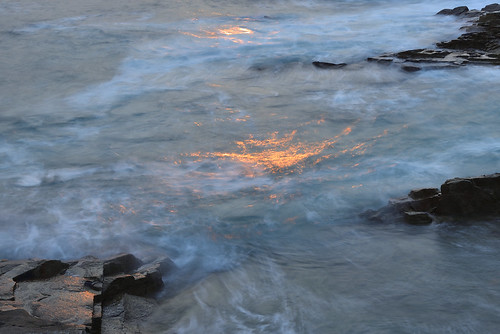Ccessibility of this major field of conservation biology.Aija Kukkala and Atte Moilanenwere retrieved inside the limits from the library access permissions with the University of Helsinki. We were capable to access about 90 from the 1834 publications discovered by this targeted search, providing us using a database of 1659 PDFs, covering years from 1980 to June, 2011. These publications consisted largely of principal analysis papers, but in addition of critiques, opinion pieces, and, to a lesser extent, book chapters and conference papers. Upon inspection, it was discovered that all except 1 of these research were relevant to spatial conservation within the broad sense, demonstrating a fantastic specificity with the search phrase. The targeted search was utilised as a starting point for our investigation. A complete text search was applied utilizing the Adobe Acrobat X and PowerGREP tools (Powergrep, 2011), and just about every mention with the core terms inside these 1659 PDFs was investigated. Hence, we are able to be confident that a relatively broad literature base was covered completely. Literature chains have been followed outside the fundamental set when acceptable. Older articles and books not offered in electronic text form have been investigated manually. Known prior summaries into SCP or spatial conservation prioritisation had been also incorporated as starting points (Margules Pressey, 2000; Justus Sarkar, 2002; Sarkar et al., 2006; Margules Sarkar, 2007; Moilanen, 2008; Moilanen, Wilson Possingham, 2009d; Linke et al., 2011). We investigated each and every term  by reviewing its historical heritage, when the term was very first talked about, how it has been defined and discussed, and how definitions and usage have changed by way of time. This overview includes verbatim quotes from original crucial publications to prevent blunders in interpretation concerning the original definition. We’ve got divided our timeline into three phases: (i) the historical period; (ii) the classical period; and (iii) the period of expansion. By the historical period we mean the period from the 1950s towards the finish of your 1980s when the ideas underlying SCP concepts had been forming however the present ideas had not yet been explicitly named and defined. By our definition, the classical period (1990s) was when most SCP concepts became firmly named and their early definitions have been discussed. The period from 2000 to the present is described as a period of expansion, reflecting consolidation on the field, a quickly increasing publication count, and also a tendency of methods to become extra PRT4165 web inclusive of new analysis capabilities. This period starts in the influential function of Margules Pressey (2000), who formulated an early operational model of SCP, effectively bringing wide recognition towards the field.II. Solutions We chosen 12 main SCP terms to concentrate on: adequacy, comprehensiveness, representativeness, representation, complementarity, threat, vulnerability, effectiveness, efficiency, irreplaceability, flexibility, and replacement price. They are PubMed ID:http://www.ncbi.nlm.nih.gov/pubmed/21337810 all ideas that display prominently inside the literature on SCP and spatial prioritisation, but which might have variable definitions. We started our critique by collating extensive literature about SCP, spatial conservation prioritisation, spatial optimisation, and other topics connected to spatial allocation of conservation work. We searched for citations from Thomson Reuters’ Web of Science by utilizing the search: subject = [`reserve network’ OR (`reserve design’ AND conservation) OR `reserve selection’ OR `site selection algorithm’ OR ((.
by reviewing its historical heritage, when the term was very first talked about, how it has been defined and discussed, and how definitions and usage have changed by way of time. This overview includes verbatim quotes from original crucial publications to prevent blunders in interpretation concerning the original definition. We’ve got divided our timeline into three phases: (i) the historical period; (ii) the classical period; and (iii) the period of expansion. By the historical period we mean the period from the 1950s towards the finish of your 1980s when the ideas underlying SCP concepts had been forming however the present ideas had not yet been explicitly named and defined. By our definition, the classical period (1990s) was when most SCP concepts became firmly named and their early definitions have been discussed. The period from 2000 to the present is described as a period of expansion, reflecting consolidation on the field, a quickly increasing publication count, and also a tendency of methods to become extra PRT4165 web inclusive of new analysis capabilities. This period starts in the influential function of Margules Pressey (2000), who formulated an early operational model of SCP, effectively bringing wide recognition towards the field.II. Solutions We chosen 12 main SCP terms to concentrate on: adequacy, comprehensiveness, representativeness, representation, complementarity, threat, vulnerability, effectiveness, efficiency, irreplaceability, flexibility, and replacement price. They are PubMed ID:http://www.ncbi.nlm.nih.gov/pubmed/21337810 all ideas that display prominently inside the literature on SCP and spatial prioritisation, but which might have variable definitions. We started our critique by collating extensive literature about SCP, spatial conservation prioritisation, spatial optimisation, and other topics connected to spatial allocation of conservation work. We searched for citations from Thomson Reuters’ Web of Science by utilizing the search: subject = [`reserve network’ OR (`reserve design’ AND conservation) OR `reserve selection’ OR `site selection algorithm’ OR ((.
Sodium channel sodium-channel.com
Just another WordPress site
